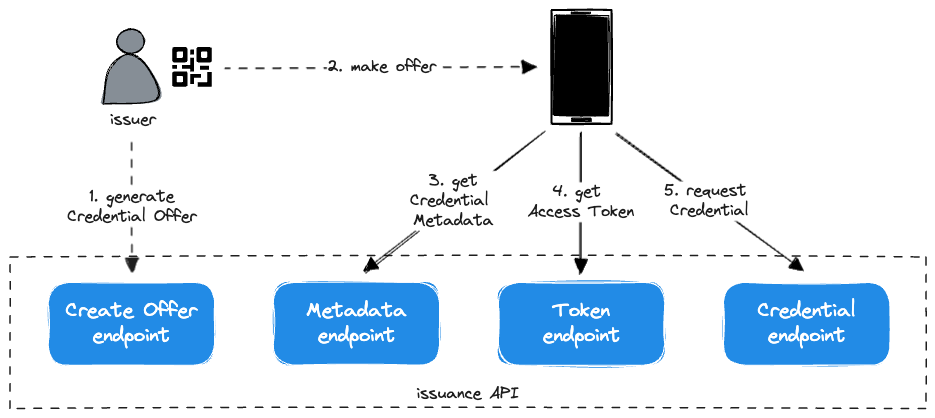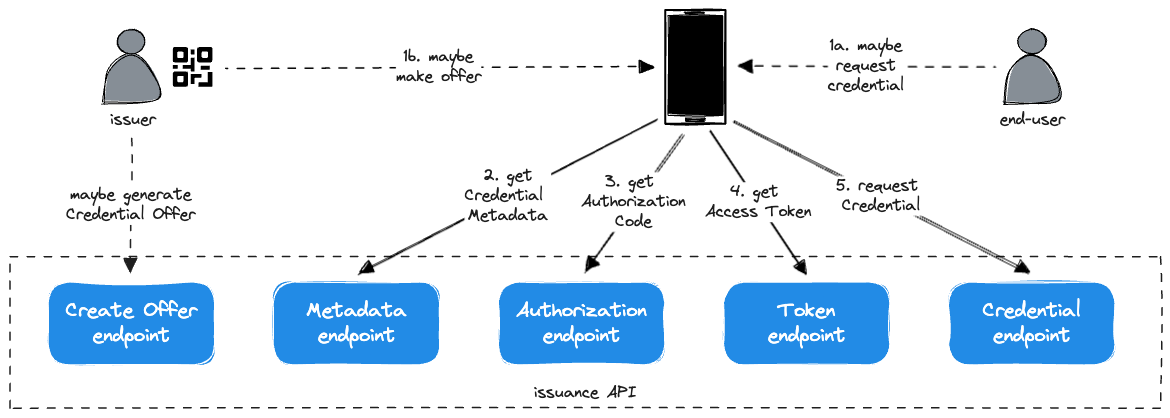Issuer
Based on the OpenID for Verifiable Credential Issuance specification, the vercre-issuer library provides an API for issuing Verifiable Credentials.
The API is comprised of a set of endpoints, called in sequence to issue a Credential. The sequence is determined both by the flow used to initiate the issuance process as well as such things as whether the issuer defers Credential issuance.
The two primary sequences (or flows) are described below.
Pre-Authorized Code Flow
The Pre-Authorized Code flow is initiated by the Issuer, who creates a Credential Offer that includes a Pre-Authorized Code. The Offer is "sent" to the Wallet, either directly or by the End-User scanning a QR code or similar.
Currently, we consider this the most common way of initiating Credential issuance and, as a consequence, have invested more in its implementation and ergonimics.
In this flow, the Wallet exchanges the Pre-Authorized Code for an Access Token at the Token Endpoint. The Access Token is then used to request Credential issuance at the Credential Endpoint.
Prior to initiating this flow, the Issuer prepares by authenticating and authorizing the End-User.

Authorization Code Flow
The Authorization Code flow can be initiated initiated by either the Issuer making a Credential Offer (without a Pre-Authized Code) or the End-User requesting a Credential. In either case, the End-User is unauthorized and must authenticate and authorize before the Credential can issued.
In this case, the Wallet must call the Authorization Endpoint to authorize the End-User. Following authorization, the Wallet exchanges the Authorization Code for an Access Token and the flow continues from Token Endpoint to Credential Endpoint as above.

Implementing the API
In the following sections, we will cover implementing the API, in particular endpoints and providers.
Working example
If you want to skip ahead, this API example provides a naive but complete implementation of the issuance API.